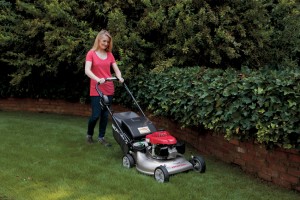 Taking proper care of the lawn is often far more complex than people realize, especially for new homeowners who may never have had to deal with this type of responsibility in the past. There are many questions that people ask when tackling proper, effective lawn care throughout the spring, summer, and autumn months. Answers to some of these most common questions can make it easier to get the job done while creating a healthy, resilient, green lawn that keeps up with the neighbors and stuns visitors throughout the full length of the growing season.
Taking proper care of the lawn is often far more complex than people realize, especially for new homeowners who may never have had to deal with this type of responsibility in the past. There are many questions that people ask when tackling proper, effective lawn care throughout the spring, summer, and autumn months. Answers to some of these most common questions can make it easier to get the job done while creating a healthy, resilient, green lawn that keeps up with the neighbors and stuns visitors throughout the full length of the growing season.
What type of fertilizer should I use, and when should I use it?
This question is tough to answer, but it’s no surprise that it’s commonly asked by many homeowners who are new to lawn care. Unfortunately, there is no single answer that will provide for proper fertilization of every lawn. Though all grass may look the same to the untrained eye, there are actually many different varieties used for today’s lawns. Each variety of grass requires a slightly different approach to seasonal fertilization, complicating this issue for homeowners depending on the type of grass that is planted outside the home.
Furthermore, fertilization recommendations actually vary by location and climate. Some fertilizers are better for warmer or cooler climates, shorter or longer growing seasons. As a result, homeowners should contact a local county office or a lawn care professional to learn more about their local climate, their exact variety of grass, and the fertilization approaches that will yield the best results throughout the year.
What is the best approach to soil testing?
Many homeowners assume that soil testing should occur every year, but this is actually a bit too frequent for most lawns. The best approach to soil testing is to wait at least two years between tests. Testing the lawn every other year will allow the lawn to respond fully to previous chemical treatments and adjustments, and will clarify the best strategy for lawn maintenance going forward.
Does my lawn need to be amended with organic material?
Probably not. Though additional organic material gets “good press” from some outlets, it’s actually not necessary to maintain the health and integrity of the average lawn. There are two key reasons why this is case. First and foremost, mowing the lawn with a mulching lawn mower already establishes a cycle of adding new organic material to the turf throughout the year. This is generally a sufficient amount of new, organic material, to make sure that the lawn is properly nourished and able to maintain good health throughout the summer.
Second, each blade of grass contributes a small amount of organic matter to the soil simply by growing. As old grass dies and new grass grows, organic matter is contributed to the soil and allows the grass to be properly nourished. Adding any further organic matter would be overkill. In fact, it may actually cause problems with the lawn instead of promoting solid, sustainable growth.
Should I mix grass types based on different growing conditions?
If the lawn is seeded with warm season grass varieties, the answer is decidedly “no” Warm season grasses tend to grow at different rates and require different forms of maintenance, which would make it very hard to keep the lawn consistent in terms of color, health, and mowing schedules. If the lawn is seeded with cool season grasses, however, then it’s certainly possible to mix the varieties planted around the home. In fact, many landscaping experts even encourage this practice. Mixing cool season grasses can aid the lawn’s density and durability throughout the year, which can actually ease lawn maintenance over the long-term.
How long should my grass be before I mow it for the first time?
Whether it’s the first time or the fiftieth time, grass should be mowed according to the “one-third” rule. That is, grass should increase its height by a third before the mower is fired up and the turf is trimmed. If the grass was cut down to two inches, for example, it would not need to be mowed again until it reaches at least three inches. Most importantly, homeowners should review the type of grass outside their home, along with local weather conditions, to determine if the lawn should remain longer, be cut shorter, or settle somewhere in between these extremes.
Where can I find OEM Honda parts and accessories?
One of the best places to find OEM replacement parts for Honda equipment is HondaLawnparts.com. The website features a unique parts search tool that allows equipment owners to narrow their search according to engine type, equipment model number, and individual part number. This filtering is the best way for equipment owners to find parts that are perfectly compatible and extremely durable, since each part stands up to Honda’s high standards for quality assurance.
